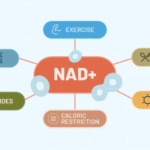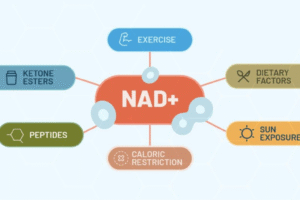
Teeth whitening has come a long way since its invention, with significant advances in technology and techniques. These innovations have made teeth whitening in Arlington Heights more accessible, effective, and comfortable for individuals seeking a brighter smile. In this article, we will explore the recent advances in teeth whitening and what they mean for you.
Understanding teeth whitening and its mechanism
Teeth whitening is a cosmetic dental procedure that works by penetrating the tooth enamel and dentin to break down and dissolve chromogens, the molecules responsible for tooth discoloration. The whitening agent, typically hydrogen peroxide or carbamide peroxide, is applied to the teeth and oxidizes the chromogens, converting them into smaller, less-colored molecules. This process is accelerated by the use of light activation, such as LED or laser, which excites the oxygen molecules in the whitening agent, allowing them to more easily penetrate the tooth structure. As the chromogens are broken down, the tooth’s natural color is revealed, resulting in a brighter, whiter appearance.
The mechanism of teeth whitening is a combination of diffusion, where the whitening agent spreads through the tooth, and oxidation, where the chromogens are broken down, ultimately leading to a more radiant and youthful-looking smile.
Indications for teeth whitening
Here is a list of indications for teeth whitening:
- Yellow or brown teeth due to aging
- Stains from coffee, tea, wine, tobacco, berries, and turmeric
- Fluorosis (white or brown spots on teeth)
- Enamel discoloration
- Dentin discoloration
- Tooth discoloration due to trauma, decay, and medications
- Single-tooth discoloration
- Discoloration of dental restorations (e.g., fillings, crowns)
- Pre-wedding or special occasion smile enhancement
- Boosting self-confidence
- Improving smile aesthetics
- Pre-orthodontic treatment (to enhance final results)
- Post-orthodontic treatment (to maintain results)
- Maintenance of previous whitening results
Exploring the recent advances in teeth whitening
The teeth whitening procedure has evolved over the decades with the evolution of precision and technology. Here are some recent developments that have helped patients achieve a radiant smile:
LED Light Technology
LED light technology has revolutionized in-office teeth whitening. This technology uses a specific wavelength of light to activate the bleaching gel, resulting in faster and more effective whitening.
At-Home Whitening Systems
Advances in at-home whitening systems have made them more convenient and effective. Custom-fitted trays and advanced whitening gels have improved results and reduced sensitivity.
Whitening Toothpaste and Mouthwash
Whitening toothpaste and mouthwash have become increasingly popular. These products contain mild abrasives and hydrogen peroxide, making them a great option for maintenance and touch-ups.
Nano-Hydroxyapatite Whitening
Nano-hydroxyapatite whitening uses tiny particles to fill in tooth enamel, reducing sensitivity and enhancing whitening results.
Laser Whitening
Laser whitening uses high-intensity light to accelerate the whitening process. This technology has shown promising results in clinical trials.
Whitening Strips
Whitening strips have become increasingly popular due to their ease of use and effectiveness. Advances in strip technology have improved adhesion and whitening results.
Desensitizing Whitening Products
Desensitizing whitening products have been developed to reduce sensitivity during and after whitening. These products contain ingredients like potassium nitrate and strontium chloride.
Natural Whitening Options
Natural whitening options like oil pulling and activated charcoal have gained popularity. While their effectiveness is still debated, they offer a chemical-free alternative.
Personalized Whitening
Personalized whitening involves customizing the whitening process to individual teeth and smile types. This approach ensures optimal results and minimizes sensitivity.
Digital Smile Design
Digital smile design uses advanced software to simulate whitening results before treatment. This technology helps individuals visualize their desired outcomes.
Bottom line
Recent advances in teeth whitening have made it easier and more effective to achieve a brighter smile. From LED light technology to natural whitening options, there’s a solution for everyone. Consult a dentist to determine the best whitening option for your individual needs and enjoy a radiant smile.














